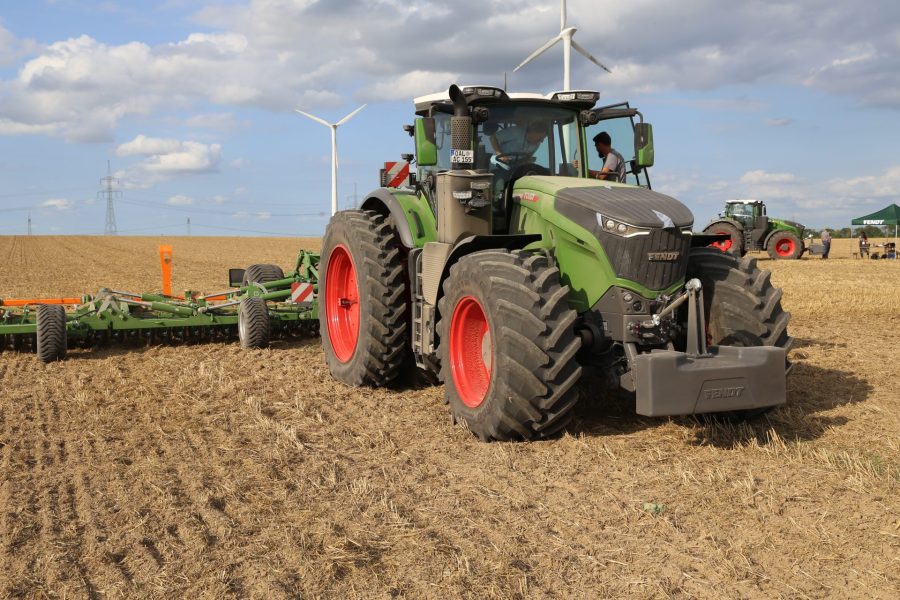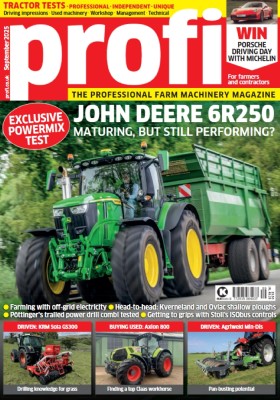Fendt’s updates to the 1000 series are much easier to get through than the new 800 Vario. The 1000 Vario Gen 4 sees a power hike with the 1040, 1044, 1048 and 1052, yes that’s right, the power from the MAN motor has been upped to 550hp when the Dynamic Power is at full flow on the new big model. It is still the same six-cylinder block but there have been changes to the pistons, injectors and crank as well as the ECU to help lower the fuel and DEF use.
A feature in the settings allows you to select the engine map of the smaller models for instance a 1048 can turn itself into a 1040. This can help save on fuel when the full power isn’t needed or when working with an implement with a lower power rating. However, you cannot buy a 1040 and turn it into a 1052, well not if you want to keep your warranty intact. And Fendt has no plans to let you hire or buy extra power with the smaller models like Krone does on its forager.
There is the option of adding an exhaust brake and servicing on the 12.4 litre engine is at 1,000 hour intervals. Like on the 800, the air filter has a self-clean function and this will also give the cab filter a blast to keep it cleaner for longer. Speaking of the 800, the 1000 also has the same work light setup.
Changes to the rear axle mean you can spec a bar axle with an inner wheel spacing width of just 1.60m and then add duals to still stay within 3.50m on the road. The example pictured was on 480/95 R54s with the Vario Grip tyre pressure system altering the pressure on all four back wheels and the two 710/60 R38 fronts. Advantages of the row crop duals are that there is more contact with the rims which are also cheaper, plus better stability than a large volume back tyre and less chance of power hop. The outer wheel is mounted to the bar axle so it can make use of the tractive power and a wheel weight sandwiched between the duals also adds to the pulling performance.
Another change is the hitch, a hybrid between the continental ladder and American swinging drawbar. Up to 4.0t load can be applied to the long drawbar which once the centralising pins are removed allow the hitch to move sideways which not only gives some extra wiggle room when hitching but is also kinder on implements in work when the steering is moved.
As part of the narrow wheel spacing the stabilisers have been ditched in favour of blocks that keep the lift arms locked when hitched to an implement while a spring keeps them tensioned when the tractor is used for towing work.
For more up-to-date farming news click here and subscribe now to profi and save 47%.






